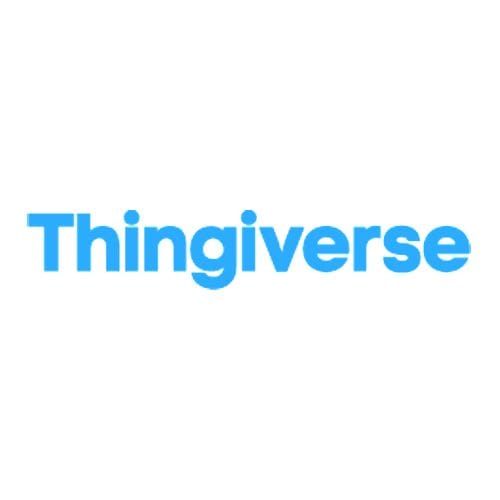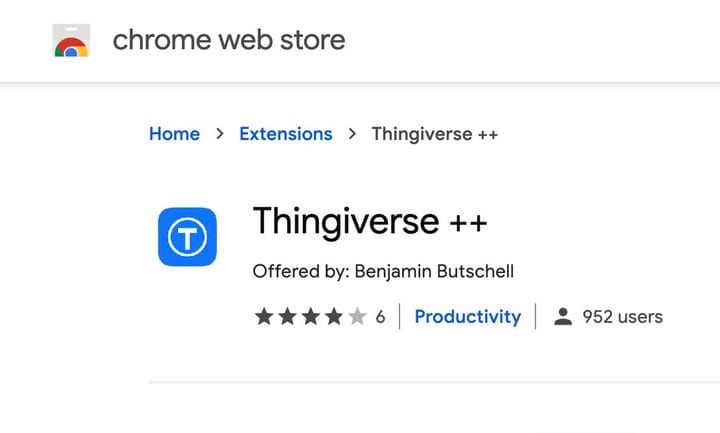![Thingiverse hasn’t changed much in the past few years [Source: Thingiverse]](https://fabbaloo.com/wp-content/uploads/2020/05/image-asset_img_5eb091f58f6a1.jpg)
There’s been a bit of chatter lately about the fate of Thingiverse, by far the largest repository of 3D printable models in the known universe.
The general sentiment seems to be something of the form, “MakerBot / Stratasys is letting Thingiverse die, why don’t they do something?” This may in fact be true to some degree, but perhaps we can gain some perspective by looking at history.
Thingiverse History
Thingiverse was the brainchild of the original incarnation of MakerBot in 2008. At that time there really were no desktop 3D printers — not as we know them now. 3D printers then were a kind of “rapid prototyping” device, and were relegated to the back of industrial workshops where they were used for certain types of product prototyping.
These industrial machines were impossible to be used by a casual operator, and so the notion of a DESKTOP 3D printer that was operable by theoretically anyone was incredibly delicious. Some folks in New York City capitalized on this desire and created something called “MakerBot”.
It was a kit to build a 3D printer, the first popularly available. I got one, and it took me 40 hours to put it together and print a blob. Tuning took a bit more time. Anyway, I ran into the classic problem after I’d tuned my CupCake: what the heck do I print next?
At the time I wasn’t a 3D modeler, so I had to rely on others to provide pre-made 3D models to print. MakerBot realized the same thing: 3D printers are useless unless something is there to print. Their market, at the time, was DIY hobbyists, who generally were not all 3D modelers. They needed some source of “content” for these machines otherwise no one would buy them.
Thingiverse Launched
To address that need they created Thingiverse. Even better, they made it “open source” style, like their CupCake 3D printer kit. This strongly resonated with the community they were attempting to market product towards. Everything was fine.
Then, due to MakerBot accepting a series of investment rounds, the pressure was on to make some cash. MakerBot sold their entire operation to Stratasys in 2013 in a blockbuster deal that saw the industrial 3D printer manufacturer enter the desktop market. Along with their purchase came Thingiverse.
I recall at the time Stratasys was quite bullish on Thingiverse, as they felt that content could be strategically important in the future in some yet-to-be-determined way. Similar sentiment was seen in other industries, like movies and games. Stratasys went along with that thinking and over the years we wondered just where Thingiverse would fit in.
MakerBot Needed Consumer 3D Printing
But then things went wrong. First, consumer interest in 3D printing collapsed as there really wasn’t a proper use case for the machines by the everyday person, and the devices were (and are) still too complex for most people to use. This put MakerBot in an awkward position, because that was essentially their market! They, like almost every other 3D printer company, had to scramble to pivot into other markets to survive.
MakerBot’s switch was very challenging. Stratasys not only found the company they had just paid an enormous sum for had a saturated small market with little growth opportunity, but also MakerBot the company itself was not set up properly. Stratasys spent more than two years reworking the internals of MakerBot, changing roles, processes, operations, fixing product problems and much more.
Finally they emerged as a new company that addressed a different market, much to the dismay of their original market, the DIY hobbyist world. To this day MakerBot is regularly cursed by hobbyists for “selling out”. In fact, they would have collapsed had they not sold out, and I don’t blame their leaders for taking the cash. Ask yourself this, seriously: if you had a choice of going broke in a couple of years or someone paying you US$400M+, which would you choose?
Meanwhile, through all this Thingiverse remained.
Thingiverse Doesn’t Fit
It didn’t really fit well into their new professional market, although they made some use of it in their educational programs.
That’s why Thingiverse seems to have languished: it’s a huge asset to Stratasys/MakerBot, but is designed for their previous market, one they don’t really address anymore. For MakerBot’s benefit, it’s not worth enhancing at this point — professional file sharing is already done in the Stratasys universe using GrabCAD.
Stratasys is in a bit of bind here. If they were to abruptly close it down they would face the wrath of thousands of participants, worldwide. That could generate a negative view of not only MakerBot, but also Stratasys. They wouldn’t want that.
This is why there isn’t a lot of news about Thingiverse: nothing much is happening.
Shutting Down Thingiverse?
Shutting it down probably would not save a ton of cash, for the company either. It’s just a big database that requires minimal maintenance. And it’s also possible they may invent some new purpose for using it with their new audience in the future. So, it appears they’re going to leave it as is.
For the vast numbers of Thingiverse users, however, this isn’t the greatest outcome. The site is still there and boasts by far the greatest number of 3D models, now almost four million. It’s the very first option thought of when someone wants to find a 3D model. “Thingiverse” has incredible brand staying power, which is perhaps another reason why Stratasys doesn’t shut it down.
However, the huge number of 3D models has caused usage challenges on the site. It’s now near impossible to find anything specific. If you do a text search you’ll find literally thousands of results, any of which — or none of which — might be what you’re looking for.
The site is completely open: anyone can upload pretty much anything (caveat coming up shortly), as per the open source concept. However, this has led to a huge quality question on Thingiverse’s content. There are no guarantees that a given entry is actually 3D printable. In fact, many are not. Some are not even 3D models, as the site was originally conceived as a “making” site containing laser cuts, etc.
Thingiverse Competitors
Over the years multiple competitors to Thingiverse have arrived to also provide 3D models to the public. While many have failed, there are several very good options one can consider, and a couple of “meta searches” that look through all of these sites at once.
What will MakerBot/Stratasys do? My guess is that the site will
simply operate as is until the company identifies a new use for the system that is in line with their current business model. Then we might expect to see big changes.
One option they might consider is to simply give the entire thing away to a new non-profit that would operate the site as it was originally intended. But that’s unlikely for two reasons: MakerBot/Stratasys may not want to give away a possibly useful asset for the future that they paid good money for, and secondly it is unlikely another group could operate Thingiverse in a financially sustainable manner given the huge number of failures in this area.
For now, Thingiverse “is what it is”, and users must decide whether they wish to use it. Remember, there are several good alternatives, such as MyMiniFactory, YouMagine, Cults, SketchFab or the new PrusaPrinters site.
[UPDATE] MakerBot reached out to us to say:
“We have no plans to shut it down. We’re currently updating the site so it’ll provide a better experience.”
Perhaps there will be some changes forthcoming?











